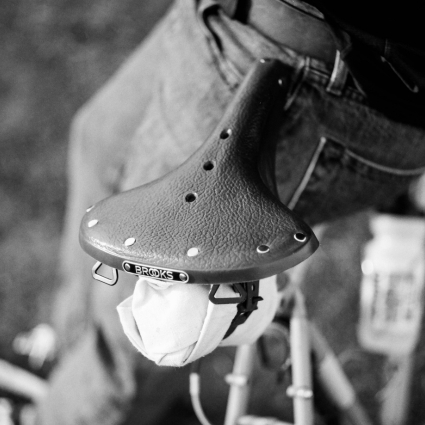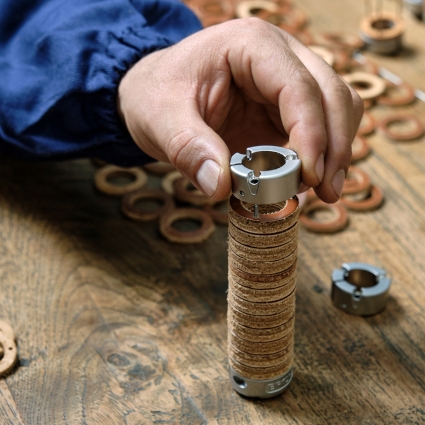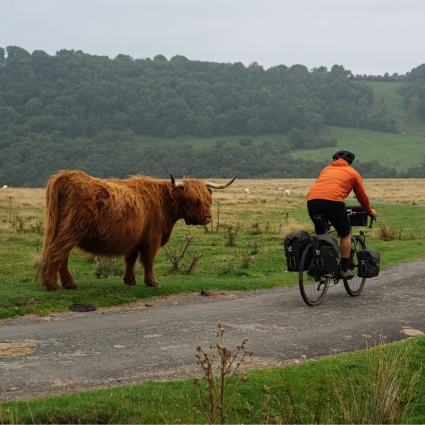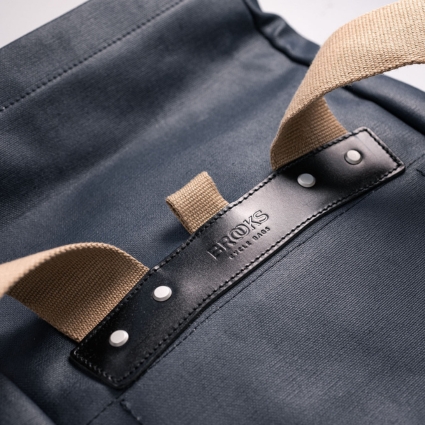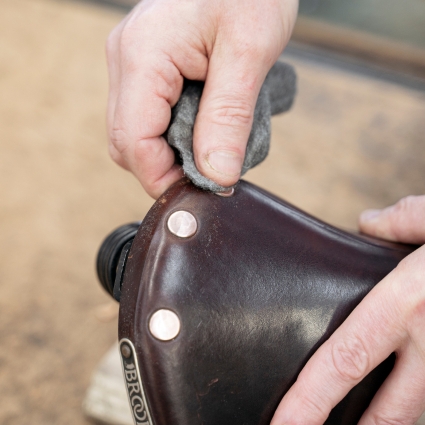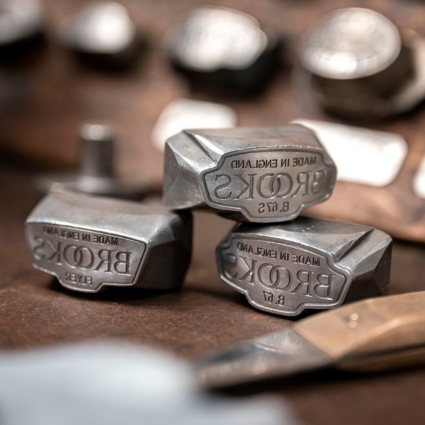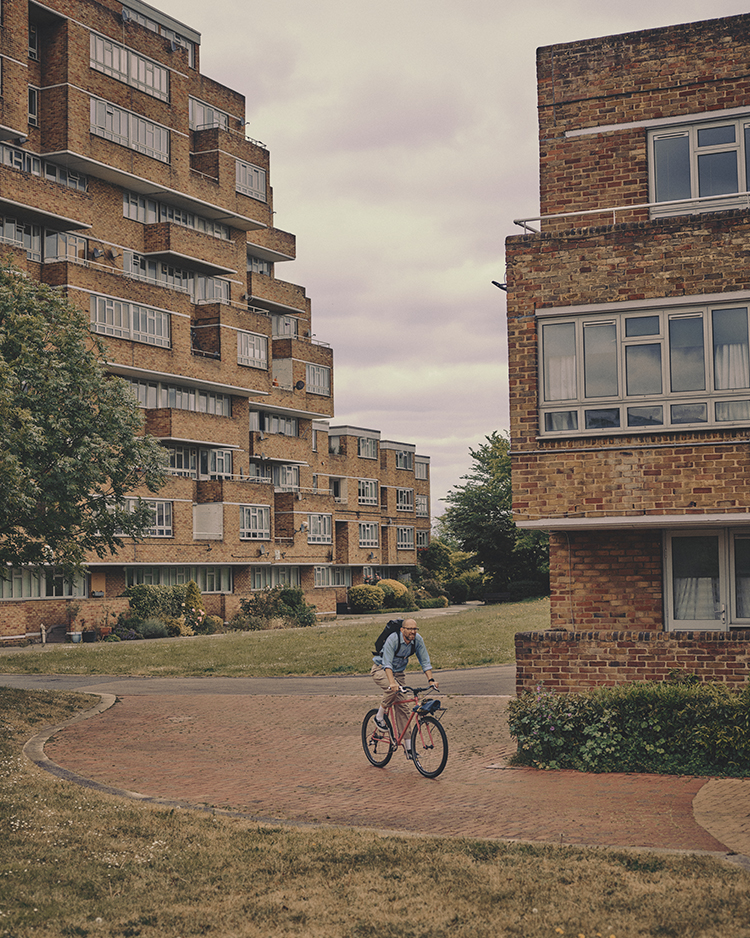
Do you offer spare parts if something breaks? (tension pin, frame/rails, springs)
If part of your leather saddle does break, you can always get this repaired. Some repairs are easily done if you have the proper tools, but most of the time our professional team has the right tools, skills and the experience and can do this for you.
You can find some replacement parts on our online shop at the link below:
https://www.brooksengland.com/take-care-products/repair-products.html
Why do I need to break in my leather saddle?
New leather is tough because of the numerous treatments of the tanning process, as well as the moulding process done at our factory. This leaves the fibres very strong, but also quite rigid. “Breaking in” is the process in which the saddle leather becomes supple and more flexible. Time, effort and care hold the key to bringing your leather saddle to its best condition.
Primarily through riding, the leather will mould to the shape of your anatomy and become more flexible. Over time, the natural movement of the leather will act like a hammock whilst riding. But be careful to make sure that the leather does not sag too low, as this will cause it to contact the metal structure and could lead to saddle failure, not to mention being uncomfortable, as you could be sitting on the upper rails of some models or even the seat post itself.
How long will it take for a leather saddle to break in?
This is always difficult to answer because everyone is different in shape and size and also depending on how far you ride, how often and how long you spend sitting down on the saddle. The weather can also play a big part on this. The answer is never the same. But, the more you ride, the faster it will break in.
How do I care and maintain my Brooks leather saddle?
Whatever the material, Brooks saddles will age beautifully and provide the user with years of uninterrupted use. However, as such, they do require a small amount of common sense looking-after. Our selection of care products are designed to keep your leather saddle looking great and functioning at its best.
As leather is a natural material and each piece reacts differently, we cannot give exact indications, but we recommend that you inspect your saddle every 6 months, depending on your cycling frequency. However, please do not over treat your saddle as this may damage it.
There are two key tasks that are essential to properly and optimally maintain your leather saddle.
Saddle Tension
With time and use, the leather on your saddle will undergo natural stretching, gradually reducing its tension. Without any intervention, the leather will begin to sag and lose its shape, leading to a loss of comfort as well as excess play in the important metal components, risking a shorter saddle lifespan or even frame breakage, or the lifting of rivets from the leather surface.
It is therefore crucial to undertake careful inspections of your saddle every 6 months to look for the signs that the leather has stretched.
Recognise Stretching
- Any obvious, deep sagging of the leather when viewing the saddle from the side
- Any perceivable slackness in the saddle assembly found by pressing down on the leather at the rear with the palm of your hand, flex should not exceed more than 5 or 6 mm
Make an adjustment:
- Work from the front of the saddle
- Use your tensioning spanner
- Make a ¼ or ½ clockwise turn on the tension pin nut (90° or 180°)
- Please watch to ensure that only the nut turns and the pin itself does not
If the nose pin turns when as you turn the bolt, you would need pilers to hold the pin when you turn it. Special note: Do not tension a wet saddle.
With a natural material like leather, there will always be variances in behavior, therefore it is not possible to say exactly how much to adjust the tension. However, it is not a good idea to overlook the tension adjustment procedure, and Brooks will refuse both warranty and extended guarantee claims in cases where this has been overlooked and the leather overtightened.
Leather Condition
Like any leather product, your Brooks leather will dry out and lose suppleness with age. Therefore, you need to rehydrate and re-nourish it from time to time. This is done by applying our Brooks Proofide dressing, which is the only leather treatment you should use on your Brooks saddle.
How to apply Proofide:
- Use a soft cloth
- Apply a thin layer of Proofide to cover the entire upper surface of the leather
- Leave on for a minimum of one hour and allow it to penetrate through the surface
- With a clean, dry and soft cloth, vigorously and thoroughly buff the leather surface until all the remaining Proofide will be removed and a healthy sheen will be returned.
Proofide also acts to soften the leather and, if applied too frequently, there might be risk of over-softening the leather to the point that it will no longer to support the weight of the rider. Because of this, apply Proofide only every 6 months.
A Brooks saddle should not be ridden long during very heavy showers or stored over longer periods in direct sunlight or heat, as this can damage the leather. Never ride the saddle when it is very wet. However, if it does get wet, as long as you let it naturally air dry it will be fine.
Most metals will rust over time, so please keep it out of the elements that can do this or wipe it dry. Likewise the hardware can rust, so please think about where you store your bike. Copper rivets can also discolour over time so you may need to polish them carefully, being careful not to get anything on the leather. Regular use should prevent the need for this.
Learn how to properly maintain your leather saddle by watching our video tutorials here.
Make sure that the leather is nourished and isn’t looking dry
Your leather should appear like how you got it the first time, shiny and looking great. If it doesn’t look like that, then it doesn’t hurt you put on a coat of good old Proofide cream on top and underneath. Let it settle for about 40-60 minutes to let the natural ingredients work their magic. Then polish off the excess cream. Please note you may need to do this more than once to make the leather better again. Check your saddle every now and then, at least every 2-3months.
A Brooks saddle should not be ridden long during very heavy showers or stored over longer periods in direct sunlight or heat, as this can damage the leather. Never ride the saddle when it is very wet. However, if it does get wet, as long as you let it naturally air dry it will be fine.
Most metals will rust over time, so please keep it out of the elements that can do this or wipe it dry. Likewise the hardware can rust, so please think about where you store your bike. Copper rivets can also discolour over time so you may need to polish them carefully, being careful not to get anything on the leather. Regular use should prevent the need for this.
Learn how to properly maintain your leather saddle by watching our video tutorials here.
What do I do if it appears that a copper rivet has lifted up from the saddle surface?
Though Copper rivets are hand hammered by our experts, in the event that your rivet is not flush with your saddle surface, you can repair this by tapping it in place with a metal hammer. Make sure you do this on a solid work table and support the reverse side of the rivet with something small and hard.
Learn how to properly repair your leather saddle by watching our video tutorials here.
How do I care for and maintain my Cambium?
With the cambium range we suggest to check your rivets to see if they are still tight. Over time, due to the vibrations from the road the rivets can loosen, though this is a seldom occurrence. Remember these saddles are hand assembled in the factory, which means all maintenance can be done by hand.
What can I do if my saddle makes a creaking noise?
A creaking noise from your Cambium saddle likely means that the nose rails are rubbing somewhere on the rubber top. This can be alleviated with a small dab of grease. Additionally, a noise can be made where the rails meet the backplate by the little black rubber plug. In this case the saddle could be reassembled and a small amount of grease applied at the contact points.
Learn how to properly repair your Cambium saddle watching our video tutorials here.
Which components on Cambium saddles can be replaced?
Cambium saddles are crafted to handle mixed terrain and inclement weather for years of hard riding. But adventures are unpredictable, and sometimes accidents happen. Simple at-home repairs can help you to get a damaged Cambium back on the roads and trails.
The Cambium saddle components, that can be replaced using proper tools, are: rivets, rails, nosepiece and backplate. These spare parts are available in our online shop: https://www.brooksengland.com/take-care-products/repair-products.html
Learn how to repair your Cambium saddle by watching our video tutorials here.
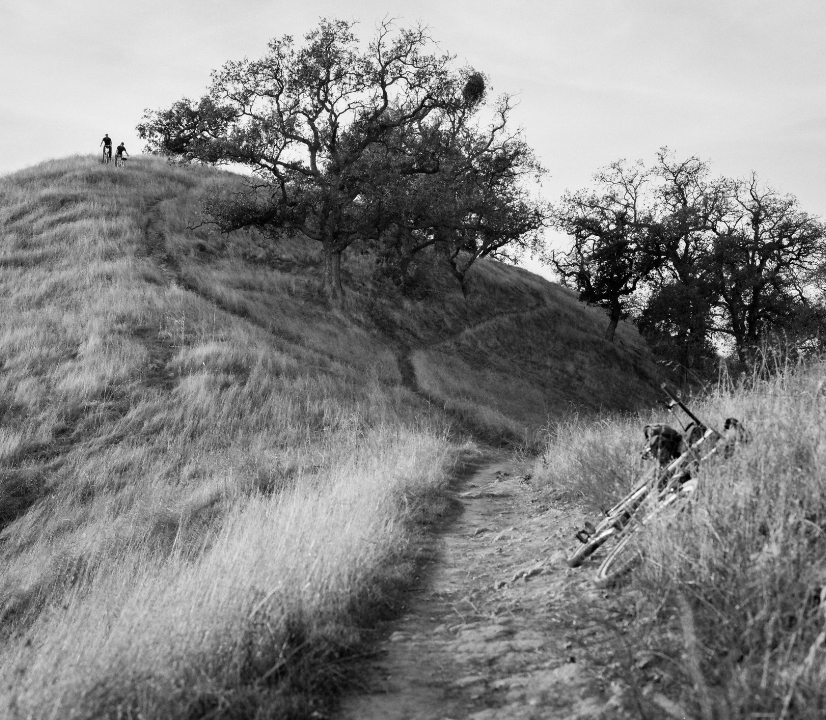
Get 15% off
your first
purchase.
Don’t miss our epic adventures. Subscribe to our inspirational newsletter.
